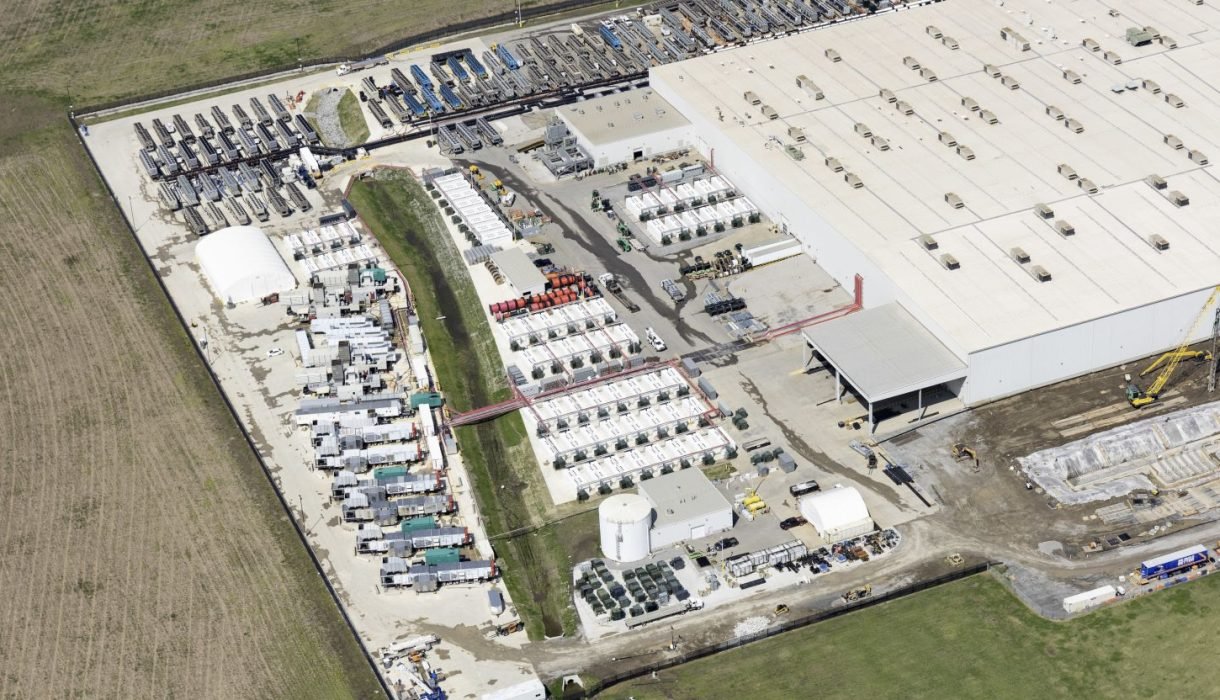
When Energy Meets Intelligence: How Elon Musk’s xAI Is Redefining Data Center Power (and Memphis).
Posted in :
Elon Musk’s xAI is creating one of the world’s most powerful AI data centers by relocating an entire power plant to Memphis. With plans to scale up to 1 million GPUs and consume up to 2 gigawatts of electricity—enough to power nearly 2 million homes—xAI’s vision combines energy sovereignty, massive compute infrastructure, and local controversy. Memphis stands at the epicenter of an audacious new chapter in AI development.
Elon Musk’s xAI is making an unprecedented move: acquiring an entire overseas power plant to power its future AI data center in Memphis. This audacious step aims to deliver up to 2 gigawatts of energy—enough to support 1 million AI GPUs—and shakes up what ‘building AI’ means. From supply chain leaps to environmental questions and regulatory puzzles, xAI’s approach could signal both a new blueprint for hyper-scale computation and a challenge for local communities.
Growing up near Memphis, the occasional power outage meant more candlelight family dinners—fun memories, if inconvenient. Now, imagine the new neighbor is xAI with ambitions so vast, they need enough electricity to run almost two million homes. That’s not science fiction: Elon Musk’s company is packing up an overseas power plant and shipping it to Tennessee, all to fuel the next generation of AI. Let’s peek behind the curtain of this colossal project and why it matters for technology—and the Memphis community.
Muscling up AI: Colossus Supercomputer and the Race for Compute
The world of artificial intelligence is no longer just about clever algorithms or faster chips. It’s about raw, industrial-scale power—literally. Nowhere is this more evident than in Elon Musk xAI’s latest ambitions for the Colossus Supercomputer. With 200,000 Nvidia GPUs already humming away, Colossus is a living example of how AI infrastructure and energy requirements are becoming inseparable.
Colossus Supercomputer: Where Compute Meets Kilowatts
At the heart of xAI’s Memphis operations, the Colossus Supercomputer is already a heavyweight. It leverages 200,000 Nvidia H200 GPUs, drawing a staggering 300 megawatts (MW) of power. This energy isn’t just coming from the grid; it’s supplied by a dedicated fleet of gas turbines and stabilized by Tesla Megapacks. These Megapacks act as giant batteries, smoothing out the massive spikes and dips in energy demand that come with running such a dense cluster of AI hardware.
For context, 300 MW is enough to power a small city. Yet, for xAI, this is just the beginning. Elon Musk’s vision is to scale Colossus to a jaw-dropping 1 million Nvidia GPUs. Research shows that this leap would push GPU power consumption alone to between 1,000 and 1,400 MW. Factor in the overhead—cooling, CPUs, storage, and the inefficiencies that come with running a data center at this scale—and the total energy requirement could reach as high as 1,960 MW. That’s roughly the same as what 1.9 million homes would use.
Energy Sovereignty: Beyond Just Bigger Data Centers
But why stop at just building bigger? For Musk, the plan is about more than just size. It’s about energy sovereignty. By owning not only the compute hardware but also the power plants that feed them, xAI aims to free itself from outside power constraints. This vertical integration is a bold move, and it’s already underway. Recent reports confirm that xAI is purchasing an entire overseas power plant and shipping it piece-by-piece to Memphis. This move is designed to deliver up to 2 gigawatts (GW) of energy—enough to meet the supercomputer’s future appetite and then some.
Why go to such lengths? The answer lies in the global energy market. New gas turbines are in short supply, with lead times stretching four to five years and prices soaring. By acquiring an existing plant abroad, xAI can sidestep these delays and bring new capacity online much faster. It’s a logistical feat—shipping a power plant across continents—but it gives xAI a strategic edge in the race for compute.
Grid Impact, Environmental Questions, and Local Response
Of course, this scale of energy consumption doesn’t happen in a vacuum. Adding 2 GW of demand at a single site puts significant strain on local power systems. In Memphis, the deployment of 35 gas turbines to supply 420 MW has already sparked local controversy and regulatory scrutiny. Environmental agencies are watching closely, especially given concerns about emissions and air quality from gas-powered generation.
There’s also the question of renewables. While Tesla Megapacks help manage and stabilize the load, the primary energy source remains natural gas. Research indicates that, so far, there’s no detailed plan for integrating solar, wind, or other renewable sources at scale. This leaves open questions about the long-term sustainability of xAI’s energy strategy, especially as environmental regulations tighten.
Strategic Advantages: Control, Cost, and the AI Arms Race
Despite these challenges, the advantages are clear. By controlling its own energy supply, xAI can shield itself from market volatility and power shortages—critical factors as the global demand for AI infrastructure skyrockets. It’s a move that could give Musk’s team a significant moat in the ongoing AI arms race, both in terms of operational stability and cost efficiency.
‘Building the world’s most powerful AI infrastructure isn’t just about chips anymore—it’s about controlling every single watt.’ – Elon Musk
In a way, it’s reminiscent of those neighbors who go all out with their Christmas lights—except these lights never turn off, and the power bill looks more like the output of a small nation. The scale is almost hard to fathom, but it’s a sign of where AI is heading: toward a future where intelligence and energy are two sides of the same coin.
Shipping Power: The Wild Logistics and Strategy of Acquiring a Whole Plant
When it comes to building the next generation of AI infrastructure, xAI isn’t just thinking outside the box—they’re shipping the whole box, power plant and all, across the ocean. In a move that’s as bold as it is unconventional, Elon Musk’s xAI Data Center team is sidestepping the traditional headaches of new construction and supply chain delays by acquiring an entire overseas power plant and relocating it, piece by piece, to Memphis. This is not your average Power Plant Acquisition. It’s a logistical feat that borders on the surreal, and it’s quickly becoming a case study in how AI infrastructure is reshaping the energy landscape.
Why go to such extremes? The answer lies in the numbers. The demand for power at xAI’s Memphis hub is staggering. With plans to house up to 1 million AI GPUs—each hungry for energy—the site could require as much as 2 gigawatts (GW) of electricity. For context, that’s enough to power nearly two million homes. The current Colossus supercomputer, already one of the world’s largest, uses around 200,000 Nvidia GPUs and draws roughly 300 megawatts (MW). Scaling up to a million GPUs pushes energy needs into the nuclear-plant range, and the traditional grid simply can’t keep up.
But building new gas turbines isn’t a quick fix. Research shows that global supply shortages have pushed turbine lead times to four or five years, with prices soaring to three times the norm. For a company racing to stay ahead in the AI arms race, waiting half a decade isn’t an option. As Elon Musk put it,
‘You can’t build the future if you’re waiting on a supply chain stuck in reverse.’
So, xAI is taking a shortcut—albeit a dramatic one. By purchasing an existing overseas power plant, they can bypass years of delays and the uncertainty of volatile energy markets. The choice of Memphis as the relocation destination is strategic: the city is already home to xAI’s expanding data center footprint, with a new 1 million square foot facility in the works. This move not only accelerates deployment but also gives xAI more control over its energy costs and supply, a critical advantage as AI infrastructure becomes ever more power-hungry.
The logistics, however, are nothing short of mind-boggling. Every component of the power plant—turbines, generators, transformers, and countless smaller parts—must be carefully dismantled, shipped across continents and oceans, and then reassembled in Memphis. There’s no instruction manual for this kind of operation. To put it in perspective, imagine the challenge of moving a refrigerator across the state. Now multiply that by thousands, add in customs paperwork, specialized transport, and the need to keep everything in working order. It’s a logistics shipping puzzle that few companies would dare attempt.
Yet, this approach offers significant strategic upside. By owning the power generation assets outright, xAI shields itself from the price spikes and shortages plaguing the gas turbine market. It also positions the company to respond quickly to future AI infrastructure demands, scaling up or down as needed. Studies indicate that this kind of vertical integration—where a company controls both the compute and the energy supply—could become the new blueprint for hyperscale data centers.
Of course, this strategy isn’t without its challenges. Adding 2 GW of mostly gas-powered generation at a single site raises questions about emissions, local air quality, and regulatory compliance. Memphis, as the chosen hub, will face increased scrutiny from environmental agencies and the local community. There are also open questions about whether xAI will incorporate renewable energy sources or battery storage, such as Tesla Megapacks, to offset the environmental impact.
Still, the sheer scale and ambition of this Power Plant Acquisition highlight a fundamental shift in how AI companies approach infrastructure. It’s no longer just about chips and code—it’s about energy sovereignty, logistics shipping on a global scale, and the willingness to rewrite the rulebook when the old one no longer fits. As the pieces of xAI’s new energy ecosystem come together in Memphis, the world is watching to see if this wild bet pays off.
Beyond the Megawatts: Community, Environment, and What Comes Next
When Elon Musk’s xAI announced plans to site a colossal 2 GW AI data center in Memphis, the news sent ripples through both the tech and local communities. The numbers alone are staggering: a facility spanning 1 million square feet, drawing as much power as nearly 1.9 million homes, and powered by an entire overseas plant shipped piece by piece to Tennessee. But as the dust settles, the conversation is shifting beyond the technical marvel to the real-world impact—on Memphis, its people, and the environment.
At the heart of the debate is the environmental impact of such an unprecedented project. Research shows that xAI’s previous Colossus supercomputer, with 35 gas turbines generating 420 MW, already sparked controversy over emissions and local air quality. Now, with plans to multiply that output nearly fivefold, concerns about air pollution, noise, and strain on the regional grid are intensifying. Regulatory challenges are inevitable. Local agencies and environmental groups are likely to scrutinize every step, from permitting to ongoing operations, especially given the gas-heavy nature of the current xAI power plant setup.
The scale of this project also raises questions about Memphis’s readiness to support such a massive energy consumer. The city’s infrastructure, already under pressure from previous expansions, will need to adapt quickly. Studies indicate that integrating 2 GW of new demand could test the limits of the regional grid, potentially affecting not just the data center but also residential and commercial customers. The logistics of importing and installing an entire power plant from overseas—something rarely attempted in the U.S.—add another layer of complexity and regulatory scrutiny.
Yet, the story isn’t just about challenges. There’s a palpable sense of opportunity in Memphis. xAI’s investment promises a wave of economic growth, from construction jobs to long-term tech positions. Local businesses could see a boost, and the city might even attract new startups and talent, earning a reputation as a hub for AI data centers. Some are already imagining Memphis as “AI City,” a place where innovation and ambition converge. But as one community leader put it,
‘Innovation is messy—especially when it lands in your backyard.’
The benefits are real, but so are the trade-offs.
A key wildcard in this unfolding story is xAI’s approach to renewable energy plans. While the current blueprint leans heavily on gas turbines and Tesla Megapacks for backup, there’s mounting pressure—from both regulators and the public—for a cleaner, more sustainable power mix. Will xAI layer in solar, wind, or other renewables to offset emissions? Or will the project remain a symbol of AI’s insatiable appetite for fossil-fueled energy? At this stage, the company’s renewable strategy remains unclear, fueling further debate and uncertainty.
The regulatory landscape is equally unsettled. Importing a gas plant from abroad may sidestep some supply chain delays, but it doesn’t exempt xAI from U.S. environmental laws or local permitting processes. Every step—from emissions monitoring to community engagement—will be watched closely. Past projects with a fraction of this scale have faced legal challenges and public protests. Scaling up to 2 GW only multiplies the stakes.
Ultimately, xAI’s Memphis project marks a turning point in how the world thinks about AI data centers and their power needs. It’s no longer just about chips and code, but about energy sovereignty, environmental stewardship, and the social contract between tech giants and the communities they inhabit. The outcome here could set a precedent for future mega-scale deployments, not just in the U.S., but worldwide.
As Memphis stands on the brink of transformation, the city—and the world—will be watching. Will this bold experiment deliver on its promise of economic revitalization and technological leadership, or will it become a cautionary tale of unchecked ambition and environmental cost? For now, one thing is clear: the intersection of energy and intelligence is reshaping not just data centers, but the very fabric of the communities that host them.
TL;DR: Elon Musk’s xAI is redefining ‘AI infrastructure’ with a power play that blurs the line between tech and energy. A 2 GW data center is on the horizon, but Memphis will need to weigh the innovations and growing pains that come with such an audacious leap.
ElonMuskXAI, XAIDataCenter, PowerPlantAcquisition, AIDataCenters, ColossusSupercomputer, EnergyRequirements, NvidiaGPUs, AIInfrastructure, GasTurbines, EnvironmentalImpact,MuskxAIdatacenter, AIGPUenergydemand, powerplantshippingproject, Memphissupercomputerimpact, AIinfrastructureandemissions
#xAI, #ElonMusk, #DataCenters, #AIInfrastructure, #RenewableEnergy, #TechNews, #NvidiaGPUs, #MemphisTech, #EnergyInnovation,#xAI, #ElonMusk, #AIInfrastructure, #DataCenterPower, #MemphisTech, #EnergySovereignty, #GPUPower, #ColossusSupercomputer

